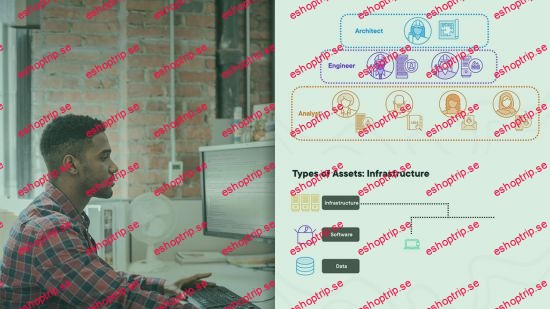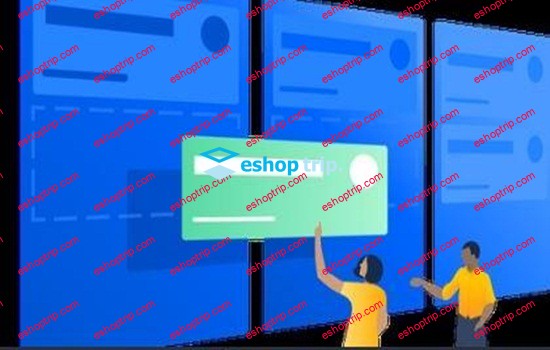Published 9/2024
MP4 | Video: h264, 1920×1080 | Audio: AAC, 44.1 KHz
Language: English | Size: 998.44 MB | Duration: 2h 50m
Learn how to design, compile and deliver the Process Definition Document – the most crucial document in any RPA project.
What you’ll learn
What RPA (Robotic Process Automation) is
What a Process Definition Document (PDD) is
How to build out a PDD with confidence
What to include within a PDD
What best practice looks like when constructing the PDD
How to set up the next stage of your RPA project successfully
How to present key information to developers successfully
What constitutes a process RPA could assist with
How to compile requirements, process maps and directions for the RPA work into one place
Key considerations such as owner, management of the document and version control
Requirements
None. We will work with you through the course
No prior knowledge of RPA or automation project management is required
No prior process management experience is required
Course has been built to be open to all levels
Reach out to me if you need assistance
Description
Many RPA/Automation courses focus on the technical – how to build actual bots or automated solutions. This series of courses focuses on how to manage this work – a vital skill often lacking in businesses today.In this course, you are going to learn about the Process Definition Document (PDD). This is the most crucial document in any RPA project. It is the document that brings together all of the key strands of the project into one place. Much of the work that has been done previously will be compiled here, and presented in a way developers can digest. To successfully deliver an RPA project, a strong, clear and confident PDD is absolutely vital.In the course, we will cover the following:- What is RPA and how to define a process.- What a PDD is – its features, sections and purpose.- How to build out a PDD.- How to pull together the process maps, business requirements and scope definitions into one format which developers can use to build the RPA solution.Getting this document right is crucial, and that includes understanding the right way to present all of the information. As we run through the course, we will do so using a scenario example, case studies and practical exercises, all to ensure you know practically how to build out a PDD, and can try it out for yourself.
Overview
Section 1: Introduction
Lecture 1 Introduction
Lecture 2 Disclaimer
Lecture 3 What is the purpose of this course?
Section 2: Fundamentals of the approach
Lecture 4 What is RPA?
Lecture 5 Examples of RPA
Lecture 6 The reasons for & benefits of RPA
Lecture 7 What is a process?
Lecture 8 What is a PDD?
Lecture 9 Scenario
Section 3: Process Definition Document
Lecture 10 Objective
Lecture 11 Objective: Demonstration
Lecture 12 Objective: Business objectives & benefits
Lecture 13 Objective: Business objectives & benefits demonstration
Lecture 14 Current process: Process overview
Lecture 15 Current process: Demonstration
Lecture 16 Current process: Standard of metrics
Lecture 17 Current process: Standard of metrics demonstration
Lecture 18 Current process: Volume of data
Lecture 19 Current process: Volume of data demonstration
Lecture 20 Business rules
Lecture 21 Business rules: Demonstration
Lecture 22 As-is process
Lecture 23 As-is process: Demonstration
Lecture 24 To-be process
Lecture 25 To-be process: Demonstration
Lecture 26 Requirements
Lecture 27 Requirements: Demonstration
Lecture 28 In & out of scope: In scope
Lecture 29 In & out of scope: In scope demonstration
Lecture 30 In & out of scope: Out of scope
Lecture 31 In & out of scope: Out of scope demonstration
Lecture 32 Non-process requirements: Systems
Lecture 33 Non-process requirements: Systems demonstration
Lecture 34 Non-process requirements: Reporting
Lecture 35 Non-process requirements: Reporting demonstration
Lecture 36 Non-process requirements: Archiving & data security
Lecture 37 Non-process requirements: Archiving & data security demonstration
Lecture 38 Closing items
Lecture 39 Closing items: Demonstration
Lecture 40 Document management
Section 4: Close out
Lecture 41 Practical exercise
Lecture 42 Review of key learnings
Lecture 43 Thank you
Lecture 44 Bonus
Anyone working within a business process, producing some sort of output,Anyone working operationally within a business, working with multiple teams, activities or outputs,Anyone who wants to be able to gain RPA and automation skills in the field of process automation,Those looking to play a great role in critical business projects today, and longer term
Homepage










